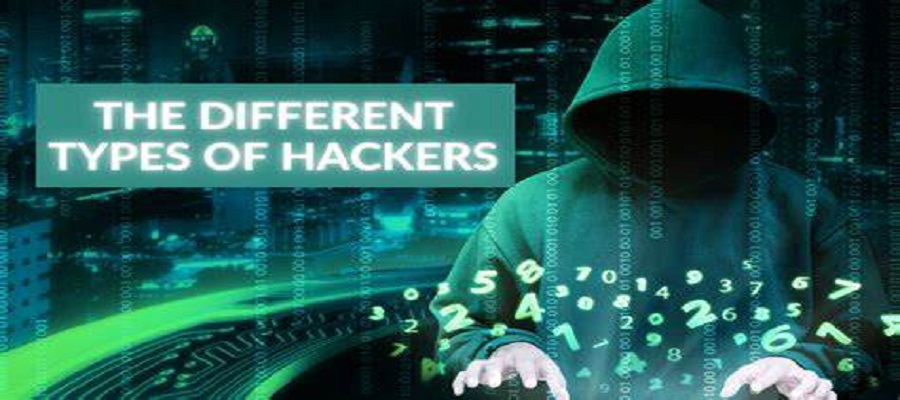E-Business
NV Rejigs Telecoms Industry, Shift to 3rd Platform Continues-Research

As technologies and business dynamics continue to evolve, network virtualization strategies are reshaping the telecommunications ecosystem.
The shift to the 3rd Platform, built on cloud, mobile, social, and big data and analytics technologies, is driving communication service providers (CSPs) and their suppliers to accelerate their efficiencies and agility.
IT industry approaches and technologies such as virtualization, balanced with telecom industry business considerations are coming to the forefront of telecom industry dynamics.
According to new research from International Data Corporation (IDC), network virtualization is set to revolutionize the telecom industry as it transforms the culture and operational infrastructure, as well as the fabric of legacy proprietary infrastructures that have, until now, dominated the space.
Communication service providers and their suppliers are embracing the promise and opportunities related to network virtualization approaches, such as software-defined networks (SDNs) and network functions virtualization (NFV).
“Despite budget concerns and questions about the ability to execute on the network virtualization vision, CSPs, telecom vendors, and partners are all embracing potential opportunities,” said Elisabeth Rainge, research vice president, Communications Service Provider Operations. “Network virtualization for telecom represents some significant challenges, but the upside is extremely high. And, while not everyone will reap the benefits of this profound sea change (e.g., entrenched telecom equipment manufacturers), IDC sees an evolution of infrastructure that is already underway.”
During the first half of 2014, a series of CSP and supplier announcements were made that provide concrete evidence of the maturity of CSP network virtualization.
Because ongoing discussions emphasize the long-term visions for network functions virtualization, software-defined network, cloud, related IT technologies, and larger concepts of network virtualization, a clear picture of the status of CSP activities and potential activities can be challenging to discern.
IDC’s research in network virtualization will continue to examine and analyze progress towards network virtualization throughout the IT and communications ecosystem.
“Vendors will resort to network function virtualization and software-defined network architecture to catalyze use cases such as the voice over LTE (VoLTE) network evolution. However, with the talk of moving away from a 5-9s model in the name of service agility and flexibility, it remains to be seen whether and how NFV and SDN can ensure faster deployment while maintaining high standards of quality of experience (QoE),” said Sathya Atreyam, Research Manager, Wireless Network Infrastructure.
“Many existing CSP network elements, such as service provider routers, Ethernet switches, and packet optical switches, will transition over the next few years to become software-enabled and programmable with open, northbound interfaces,” said Nav Chander, Research Manager, Wireline Network Infrastructure.
“Many networking vendors are already delivering their first generation NFV-based Virtual CPE solutions, and a number of leading CSPs will begin to launch commercial virtualized telecom services beginning in late 2014.”
Two new IDC reports, The Network Virtualization Evolution in Telecom, and Status of CSP Network Virtualization, 1H14, identify some of the fundamental changes and progress that telecom network virtualization is and will bring to technology architectures, organizational structures, vendor relationships, and services consumed by communications service providers.
The Network Virtualization Evolution in Telecom sets the scene for a number of future reports on different aspects of network virtualization that IDC will publish in 2014 and 2015.
International Data Corporation (IDC) is the premier global provider of market intelligence, advisory services, and events for the information technology, telecommunications, and consumer technology markets.
IDC helps IT professionals, business executives, and the investment community to make fact-based decisions on technology purchases and business strategy.
More than 1,000 IDC analysts provide global, regional, and local expertise on technology and industry opportunities and trends in over 110 countries.
In 2014, IDC celebrates its 50th anniversary of providing strategic insights to help clients achieve their key business objectives.
E-Business
Huawei Unveils AI Computing System to Challenge Nvidia’s Flagship Product

China’s Huawei Technologies unveiled an AI computing system on Saturday that an industry expert said rivals Nvidia’s most advanced product, as the company aims to expand its footprint in the country’s booming AI sector.

The CloudMatrix 384 system made its public debut at the World Artificial Intelligence Conference (WAIC), a three-day event in Shanghai, attracting a large crowd to Huawei’s booth with its showcase of cutting-edge AI innovations.
The system has attracted significant interest from the global AI community since Huawei (HWT.UL) first introduced it in April. Industry analysts see it as a direct challenger to Nvidia’s GB200 NVL72, the most advanced system-level offering currently available from the U.S. chipmaker.
In an April article, Dylan Patel, founder of semiconductor research firm SemiAnalysis, stated that Huawei now possesses AI system capabilities that could surpass those of Nvidia.
Huawei staff at its WAIC booth declined to comment when asked to introduce the CloudMatrix 384 system.
A spokesperson for Huawei did not respond to questions.
Huawei has become widely regarded as China’s most promising domestic supplier of chips essential for AI development, even though the company faces U.S. export restrictions.
Nvidia CEO, Jensen Huang told Bloomberg in May that Huawei had been “moving quite fast” and named the CloudMatrix as an example.
The CloudMatrix 384 system features 384 of Huawei’s latest 910C chips and, according to SemiAnalysis, surpasses Nvidia’s GB200 NVL72 in certain performance metrics, despite the latter using 72 B200 chips.
SemiAnalysis attributes this performance advantage to Huawei’s strong system design, which offsets the lower power of individual chips by leveraging a greater number of them and incorporating system-level innovations.
Huawei describes the system as utilizing a “supernode” architecture that enables ultra-high-speed interconnectivity between chips.
In June, Zhang Pingan, CEO, Huawei Cloud confirmed that the CloudMatrix 384 was already operational on Huawei’s cloud platform.
E-Business
Transcorp Hotels Delivers Stellar H1 Results, Declares Over ₦1Bn Dividend

Transcorp Hotels Plc has delivered a stellar performance in the first half of 2025, recording a 60% year-on-year surge in revenue to ₦47.57 billion, up from ₦29.72 billion in H1 2024. Gross profit climbed 71% to ₦36.21 billion, maintaining a strong 76% margin despite inflation and operational headwinds.

The hospitality giant, a subsidiary of Transnational Corporation Plc, also announced an interim dividend payout of ₦1.024 billion — offering ₦0.10 per 50 kobo ordinary share to shareholders.
In a bold move, the company unveiled Nigeria’s largest corporate venue — the 5,000-seat Transcorp Centre — staking its claim as the new leader in event hospitality. Chairman Emmanuel Nnorom described the results as proof of Transcorp Hotels’ transformative strategies and unwavering investor commitment. MD/CEO Uzo Oshogwe attributed the success to relentless execution and a resilient business model.
Transcorp Hotels, renowned for iconic assets like Transcorp Hilton Abuja and its digital platform Aura, says it isn’t just leading Nigeria’s hospitality sector — it’s redefining excellence across Africa.
E-Business
Microsoft Servers Hacked by Chinese Groups

Chinese “threat actors” have hacked Microsoft’s SharePoint document software servers and targeted the data of the businesses using it, the firm has said.

China state-backed Linen Typhoon and Violet Typhoon as well as China-based Storm-2603 were said to have “exploited vulnerabilities” in on-premises SharePoint servers, the kind used by firms, but not in its cloud-based service.
The US tech giant has released security updates in response and has advised all on-premises SharePoint server customers to install them.
“Investigations into other actors also using these exploits are still ongoing,” Microsoft said in a statement.
The firm said it had “high confidence” the hackers would continue to target systems which have not installed its security updates.
It added that it would update its website blog with more information as its investigation continues.
Microsoft said it had observed attacks in which hackers had sent a request to a SharePoint server “enabling the theft of the key material by threat actors”.
Charles Carmakal, chief technology officer at Mandiant Consulting firm, a division of Google Cloud, told reporter, it was “aware of several victims in several different sectors across a number of global geographies”.
Carmakal said it appeared that governments and businesses that use SharePoint on their sites were the primary target.
A number of adversaries who stole material encoded by cryptography were then able to regain ongoing access to the victims’ SharePoint data, he said.
“This was exploited in a very broad way, very opportunistically before a patch was made available. That’s why this is significant,” Carmakal said.
Carmakal said the “China-nexus actor” was deploying techniques similar to previous campaigns associated with Beijing.
Microsoft said Linen Typhoon had “focused on stealing intellectual property, primarily targeting organizations related to government, defence, strategic planning, and human rights” for 13 years.
It added that Violet Typhoon had been “dedicated to espionage”, primarily targeting former government and military staff, non-governmental organizations, think tanks, higher education, the media, the financial sector and the health sector in the US, Europe, and East Asia.
Meanwhile, Storm-2603 was “assessed with medium confidence to be a China-based threat actor”.

 General News2 days ago
General News2 days agoFG Plans N50m STEEM Grant to Support Student Innovation in August

 E-Business2 days ago
E-Business2 days agoTranscorp Hotels Delivers Stellar H1 Results, Declares Over ₦1Bn Dividend

 E-Financial2 days ago
E-Financial2 days agoCardoso, CBN Boss Risks Arrest over Alleged N5.2 Trillion Unremitted Funds

 Telecom2 days ago
Telecom2 days agoMTN Media Innovation Programme Fellows Gain Insight into Nigeria’s Connectivity Backbone

 General News2 days ago
General News2 days agoExperts Champion Sustainability at Lagos Green Economy Forum

 General News2 days ago
General News2 days agoUK Businesses Look to Africa As Strategic Growth Partners

 Telecom2 days ago
Telecom2 days agoDriving Digital Inclusion: Anambra’s Mobile Tech Hub Brings Free WiFi to the People

 Broadcasting2 days ago
Broadcasting2 days agoNDPC Hides MultiChoice Privacy Violation Details Despite FOI Request- FIJ















